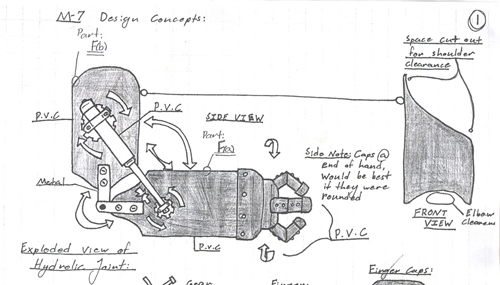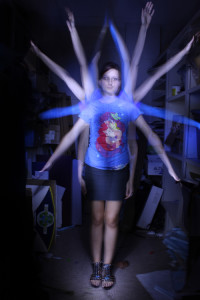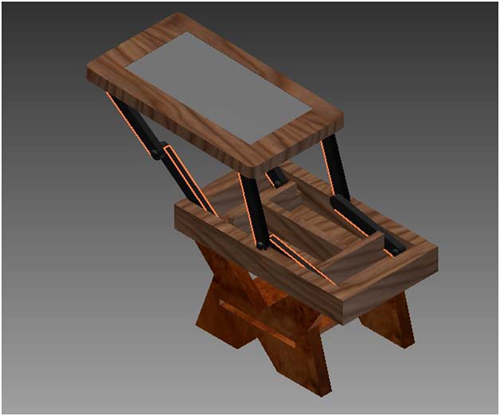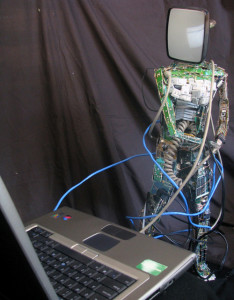
As an art educator, one of my goals is to help students identify and develop the necessary skills for a rewarding and productive career that will benefit them, their community, and the world in general. I am often asked where art fits into this endeavor. The world is changing so fast and our definition and understanding of the purpose of art has evolved tremendously. Art is so much more than a pretty picture on the wall. The definition of an artist is broader. A favorite quote of mine from Transformation of Nature in Art (1934) by the philosopher Ananda K. Coomaraswamy (1877–1947) reads “The artist is not a special kind of man, but every man is a special kind of artist.” It speaks to my belief that we all have access to creativity within. Research shows that art-making activities —which use the right side of the brain—support and foster creativity, which is essential to innovation. Visual design and creative thinking are incorporated into all careers—from scientists to carpenters and homemakers to engineers. Companies want workers who can brainstorm, problem-solve, collaborate, contribute, and communicate new ideas. In the field of education, art becomes more powerful when it is used in conjunction with other subjects. I feel like part of my purpose is not only to educate my students, but also to teach the people around me about the impact of art on their lives.

The project I presented for the Mary Whyte Art Educator Award is based on STEAM (Science, Technology, Engineering, Arts and Mathematics)—one of latest movements/initiatives in education based on hands-on, reality-centered, interdisciplinary collaboration. Working with the engineering teacher, I developed a unit for a design team consisting of visual art and engineering students. The cross-curricular project involved engineering, computer technology, industrial design, commercial art, innovative thinking, competition, teamwork, and creativity.
The art students came up with an invention and drew it from different angles (incorporating spatial intelligence). They wrote a description of the object (incorporating literacy and writing) and identified the measurements (involving math skills). The designs were then sent to the engineering class who selected the most appropriate designs for their task. The engineering students transformed the sketches into CAD (computer-aided design) digital images using a program called Inventor. Engineering students were encouraged to communicate with the artists on specifications and clarification through email. Engineering students created a PowerPoint to present to the student teams and a potential client/engineering team. Some of the digital designs could be printed on the school’s 3-D printer—Amazing!

Educators are discovering the power of the arts in all subject areas. My project’s goal was to create, incorporate, and infuse multi-disciplinary units that incorporate Science, Technology, Engineering and Math into the Arts and academic subjects. People have realized that life is not divided into subjects but involves integration, collaboration and connections in order to make something “big” happen. Art focuses on Benjamin Bloom’s highest intelligence trait: creativity. Without creative minds scientists would not take the risks to discover; engineers would not have anything to create; and just think of all the “creative” math that we use each day. Art education involves not only drafting, composition, color-theory and 3-D modeling—art teachers employ math, literacy, science, history, design, as well as social and emotional learning.

As I plan my day-to-day lessons, I incorporate science activities such as sketching from nature and the chemistry of paints and clay. We explore technology in our use of Photoshop for photography sessions, and we research artists and images on the classroom Smart board. My classes study design elements, environmental aesthetics, and architecture connected to engineering. Art instruction includes mathematics by utilizing geometric shapes, perspective, and the Golden Ratio in compositions. I try to impress upon my students the need to be innovative as they pursue fields about which they are passionate. I believe that when people realize the power of the arts and how all things connect in life, the arts will become more relevant, appreciated, and supported.
In order to promote these ideas to my peers, I designed three graduate classes that provide opportunities for teachers to share ideas and teaching strategies that integrate the arts into other subjects. I will also be teaching a graduate painting class in the fall sponsored by the Berkeley County School District and Charleston Southern University. The class, titled Teachers as Artists: Community, Collaboration, Connections, is a studio experience emphasizing STEAM connection. I’ve discovered that when people collaborate—their ideas become larger and their projects more powerful.

I invite YOU to reflect on how your job requires creativity and connects to the arts, and encourage you to become aware, teach your children, get involved in your school’s STEAM programs, and come visit my graduate class this fall to make more connections. Please share your thoughts and suggestions in the comment field below on how we can ALL make the arts stronger.
—Robin Boston, 2012 Mary Whyte Award Winner, art educator/Artist, and guest blogger
Published June 29, 2012

